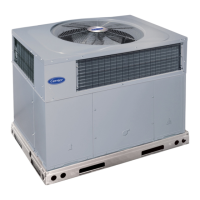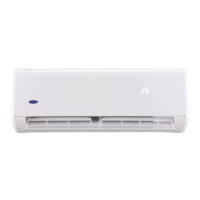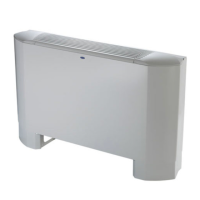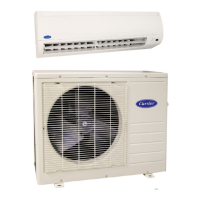6. MAINTENANCE
6.1. INTRODUCTION
A comprehensive maintenance program will help to ensure that the unit
continues to operate reliably. Such a maintenance program will also help
to control operating costs, increase the unit's working life, and improve
performance.
IMPORTANT TO READ AND FOLLOW
Regular maintenance includes a quick overview of the unit
from a Safety perspective. Service Technician must pay par-
ticular attention, but not exclusively to: nuts and bolts tight-
ening (replacing if missing), electrical wires, harnesses, fuel
lines routing (repairing or replacing if needed), doors, skins
grills, panels conditions (repairing or replacing if needed).
Confirmation of such operations can be detailed on request.
All maintenance services must be done by a technician trained
on Carrier products respecting all safety and quality standards of
Carrier.
6.2. MAINTENANCE SCHEDULE
Service frequency (Hours)
Service type
2000 4000
A X
B X
7. RECOMMENDATION
This unit is not designed to carry special loads which emit corro-
sive gas.
These kinds of products can impact unit performance, and seri-
ously reduce component lifetime.
Please contact us if such products need to be carried.
• Proper air circulation in the insulated box, air that can move around
and through the load, is a critical element in maintaining product quality
during transport. If air cannot circulate completely around the load: hot
spots or top freeze can occur.
• The use of pallets is highly recommended. Their usage allow air to
flow more freely through them, giving air the possibility to return to the
evaporator, helping products protection from heat passing through the
floor of the truck. When using pallets, it is important to refrain from
stacking extra boxes on the floor at the rear of the truck, because this
will cut off the airflow.
• Product stacking is another important factor in protecting the product.
Products that generate heat, fruits and vegetables for example, should
be stacked so the air can flow through the product to remove the heat;
this is called "air stacking" the product. Products that do not create heat,
meats and frozen products, should be stacked tightly in the center of
the box.
• All products should be kept away from the sidewalls of the body,
allowing air to flow between the body and the load; this prevents heat
filtering through the walls from affecting the product.
• It is important to check the temperature of the product being loaded
to ensure that it is at the correct temperature for transport. The
refrigeration unit is designed to maintain the temperature of the product
at the temperature at which it was loaded; it is not designed to cool a
warm product.
7.1. BEFORE LOADING
• Pre-cool the inside of the insulated body by lowering the temperature
for about 15 minutes.
• Evacuate the humidity existing inside the box by carrying out a
manual defrost. This can only take place when enabled by the defrost
thermostat (box temperature lower than 3°C during pull down and 8°C
during heating).
• Evaporator fans are protected by safety grills. In the event of heavy
duty use of the unit, ice can accumulate on the grills. It is therefore
recommended to clean them regularly by means of a small brush. The
operation MUST be done when the unit has been SHUTDOWN.
62-61932-04 11
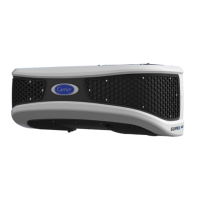
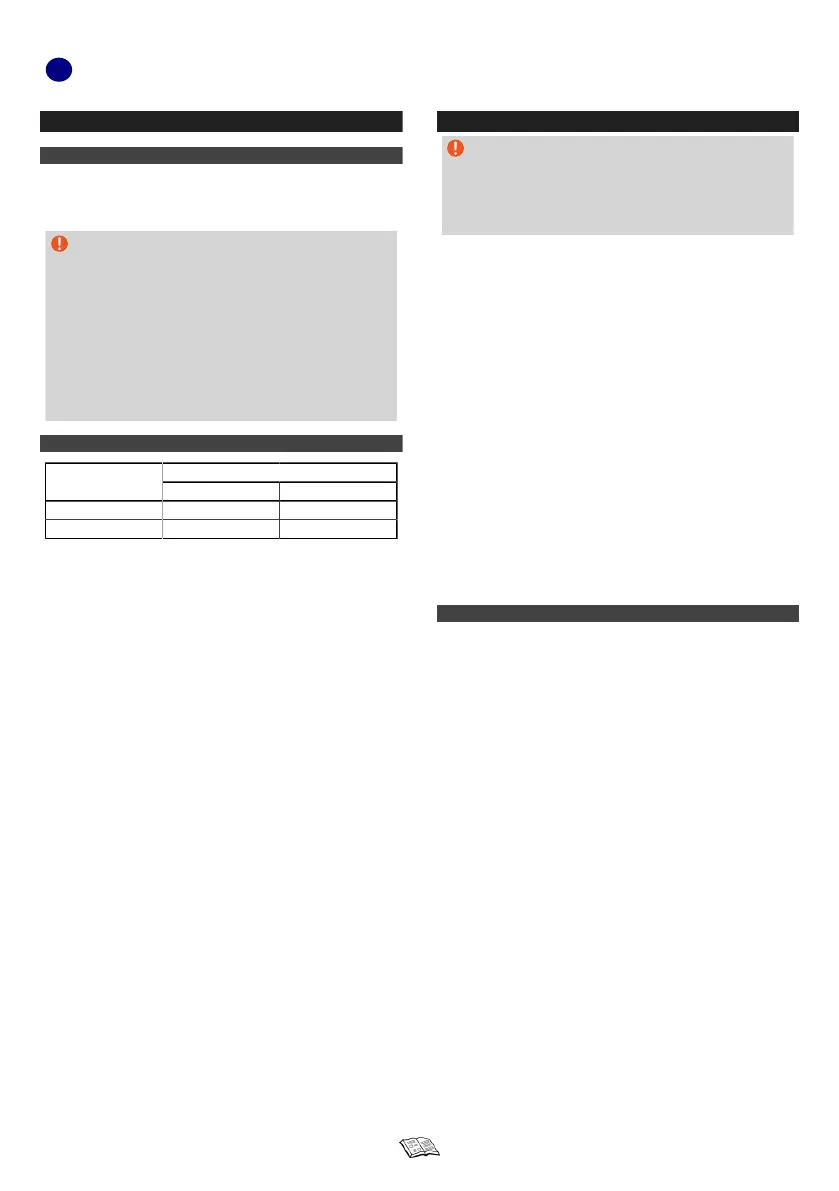